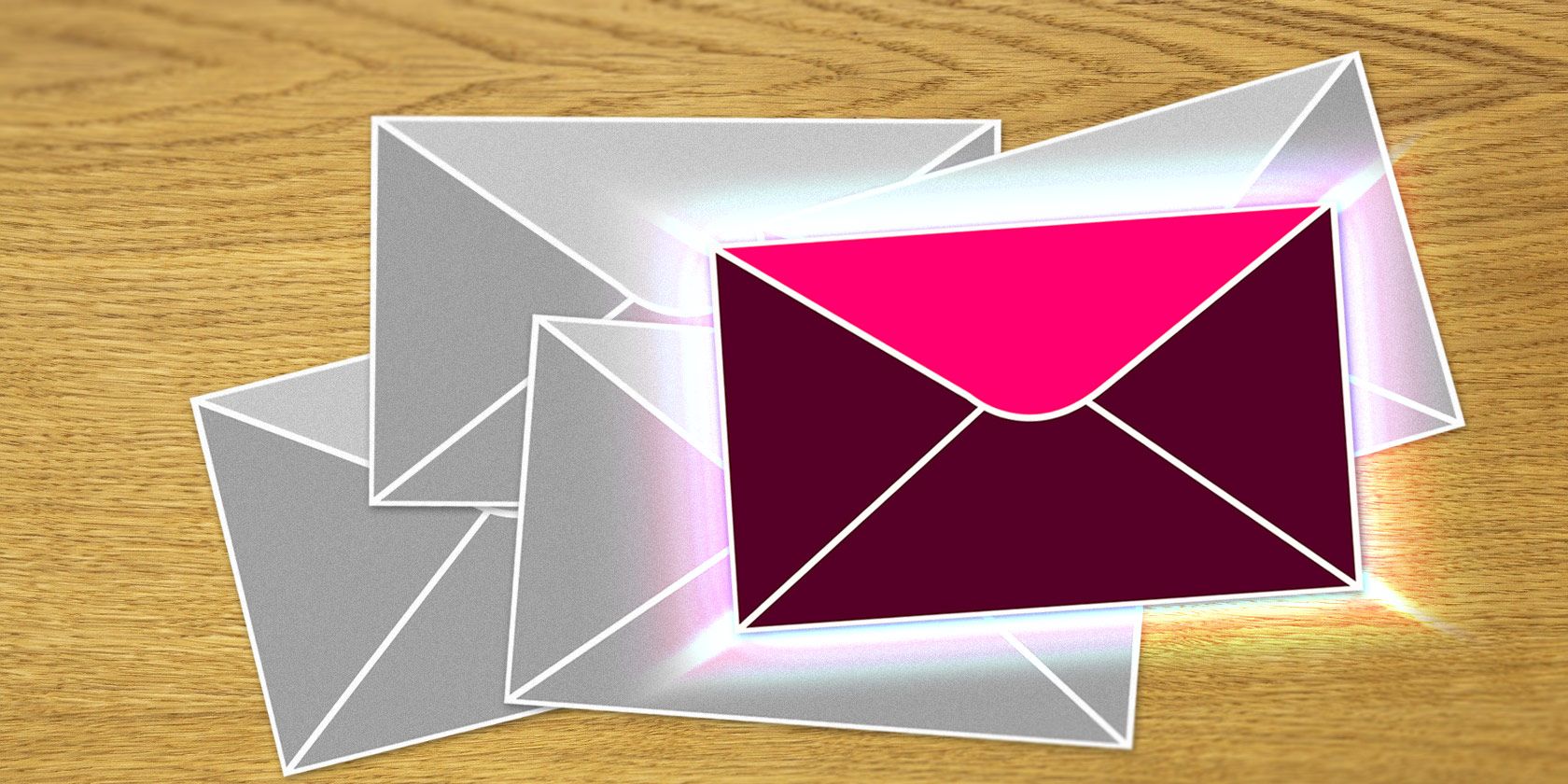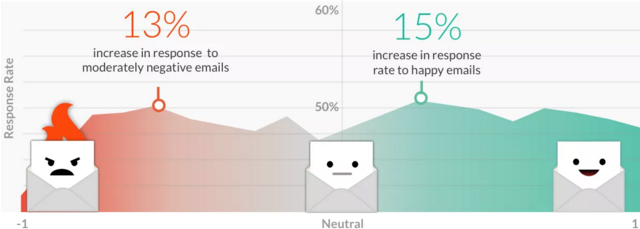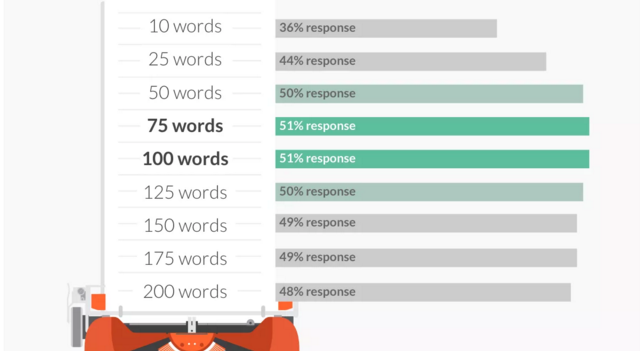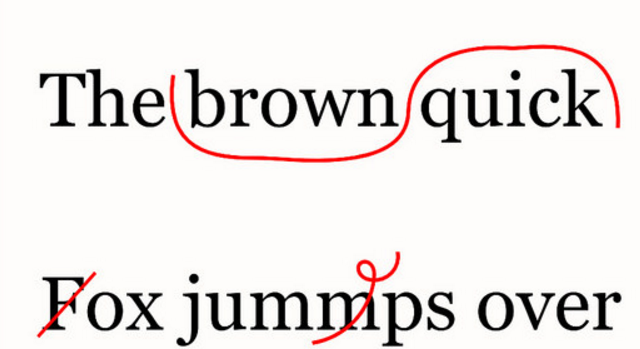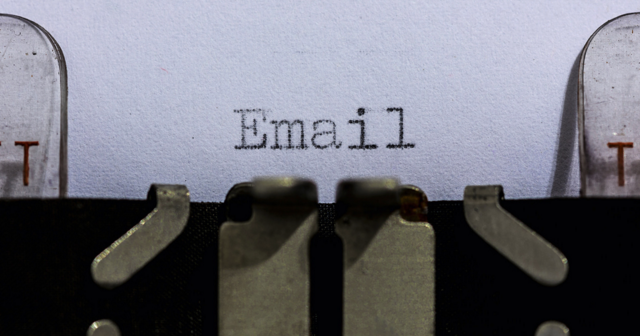Writing effective emails seems easy enough. But if you want your emails to perform even better, keep in mind the following science-backed rules.
In the past, we've listed 12 reasons why people are still ignoring your emails. We've even given you step-by-step instructions on getting busy people to respond to your messages. But now it's time to share some even more specific, actionable tips — backed by data.
Each of these tips doesn't just improve the chances of your emails being read, but also of you receiving a positive response from those emails. This is important because email is still the main form of communication in the business world. By knowing how to craft effective emails, you give yourself a definite advantage over your colleagues.
1. Get on First Name Terms
This sounds obvious, but if you really want people to pay attention when they receive an email from you, use their name. And use it more than once.
Research published back in 2006 showed that several regions of the brain "show greater activation to one's own name", providing evidence that "hearing one's own name has unique brain functioning activation".
Using your recipient's name in the email subject and email body is therefore a psychological trick that can grab attention. Closing with "Hope to hear from you soon, Stan" is far more effective than merely "Hope to hear from you soon".
2. Embrace The Halo Effect
People are influenced by people they trust. If a manager advises you to get in touch with the director of your company, name that manager in your introductory email. Cold emails are horrible to receive. Showing that you have the support of someone your recipient trusts is therefore extremely important.
This is in part due to a theory called the Halo Effect. This is a kind of confirmation bias. In this case, the bias would likely improve the director's general impression of you simply because of their favorable impression of the manager who referred you.
You don't have to stick to mentioning superiors, though. Drawing on the views and ideas of experts, customers, mutual friends, and crowds can also strengthen your email, provided the recipient values the views of the people you reference.
3. Be Angry or Happy. But Never Neutral
When Boomerang, a leading Gmail app, analyzed its data, they found something incredibly interesting. "One of the most significant factors in determining response rates is how positive (words like great) or negative (words like bad) the words in the message are".
Both moderately positive and negative emails received 5–15% more responses than neutral emails. That being said, extremely hostile emails received barely any response. Excessively flattering emails didn't perform much better, either. In other words, get across your feelings, but don't overreact.
4. Keep it Short (But How Short?)
I know, I know. There will be exceptions to this. One of my favorite cerebral sites, Brain Pickings sends incredibly long emails that are a delight to read. But on the whole, the data suggests you should avoid lengthy emails.
In fact, along with that info on the types of words you should use in your messages, Boomerang also found the "ideal" length of an email. Based on their analysis of 40 million emails, they found those containing no more than 50–175 words had the most chance of receiving a reply (49–50%). This is also supported by the findings of a 2010 MIT study.
This is sage advice, but isn't always practical. But the lesson is to keep your emails concise. One way to do this is to subscribe to the Five Sentences philosophy, and never send emails over five sentences in length. As investor and author Guy Kawasaki told Entrepreneur.com, "less than five sentences is often abrupt and rude, more than five sentences wastes time."
5. Use the Word "Because"
If you have the audacity to ask someone to do something for you, at least tell him or her why. We've known this since the '70s, when Professor of Psychology at Harvard University, Ellen Langer published a study highlighting the importance of the word "because".
We far too often receive emails that just demand something ("Can you send me that report by 2pm?"), without explaining why. But by introducing the word "because" into our request ("Can you send me that report by 2pm because it needs to be edited by 5pm), the chances of compliance increase.
According to that study, this could be because "people go on 'automatic' behavior… as a form of a heuristic, or short-cut. And hearing the word 'because' followed by a reason (no matter how lame the reason is), causes us to comply."
6. Don't Offer More Than 3 Choices
The Paradox of Choice is where we have such an abundance of options that we become paralyzed. To ensure your emails don't result in a Paradox of choice, try not to offer any more than three options.
The human mind loves the magic of three. It's why we give three medals at the Olympics. We analyze things in terms of optimistic, realistic, and pessimistic (or high, medium, and low). And it's why economic markets often mature to only house three major competitors.
In terms of decision-making, we also love to rely on three reasons, or three choices. This was shown through research titled When Three Charms But Four Alarms, conducted by two behavioral scientists. Applied to emailing, if you're arranging a meeting or a call, try to only give three time and date options. Alternatively, you could use a meeting-scheduling tool like Doodle, which we've reviewed in the past.
7. Write at Third-Grade Level
The reading grade level of your emails can have a massive effect on your response rates. According to Boomerang, emails written at a college reading level had a response rate of just 39%. The most effective reading grade was third-grade, which achieved a 53% response rate.
The reading level is mainly figured out by looking at "number of syllables in your words and the number of words in your sentences." To improve your response rate then, keep both your sentences and your words short. To check the reading grade of your own emails, copy and paste them into tools such as Readability-Score, or Hemingway Editor.
8. Proofread Your Text
For longer emails this goes without saying, but for shorter emails, proofreading is often overlooked. This is a bad idea.
In a 2001 study, Larry Beason showed that mistakes in writing (including spelling and grammatical mistakes, as well as logical mistakes) have several negative effects on the perception of the writer.
When a reader notices a mistake, they automatically make assumptions about the writer. In this study, the most common assumptions were that the writer was a faulty thinker, not a detailed person, a poor communicator, and/or poorly educated.
These are some pretty damaging attributes you can avoid being seen to have, simply by proofreading each of your emails.
9. Display Numbers as Numerals
If numbers like stats, data, dates, time, etc. are important in your message, display these as numerals rather than typing them out (12, instead of twelve).
Eye-tracking studies have shown that a reader's eyes generally scan over text, whereas "numerals often stop the wandering eye". This is because "numbers represent facts". Numbers are hard data that the mind can pick out quickly. The reader's mind assumes those numbers are an important part of the message.
Bear this in mind when crafting your own emails. If numbers are an important part of your message, display these as numerals so your reader can filter the important from the unimportant.
Making Email Work For You
In most jobs, emails are a crucial part to how we communicate with our colleagues. Whether you send 10, or 100 emails per day, knowing how to craft effective messages is a skill you need to learn.
As you can see from above, this isn't difficult. Small changes, such as making your emails more succinct, proofreading, or changing the emotion of your writing can have a big impact. And with free email improvement tools to help, there's no excuse.
These chances can not only make it more likely that your emails will be noticed and responded to, but will also help to cultivate an improved professional image of yourself.
What changes have you made to the way you write emails that have improved their effectiveness? We'd love to hear!
Image Credits: Hug by Hernán Piñera (Flickr), Question Mark by Marco Bellucci (Flickr), Proofreading marks example by volkspider (Flickr), Email by Dennis Sklay (Flickr)

